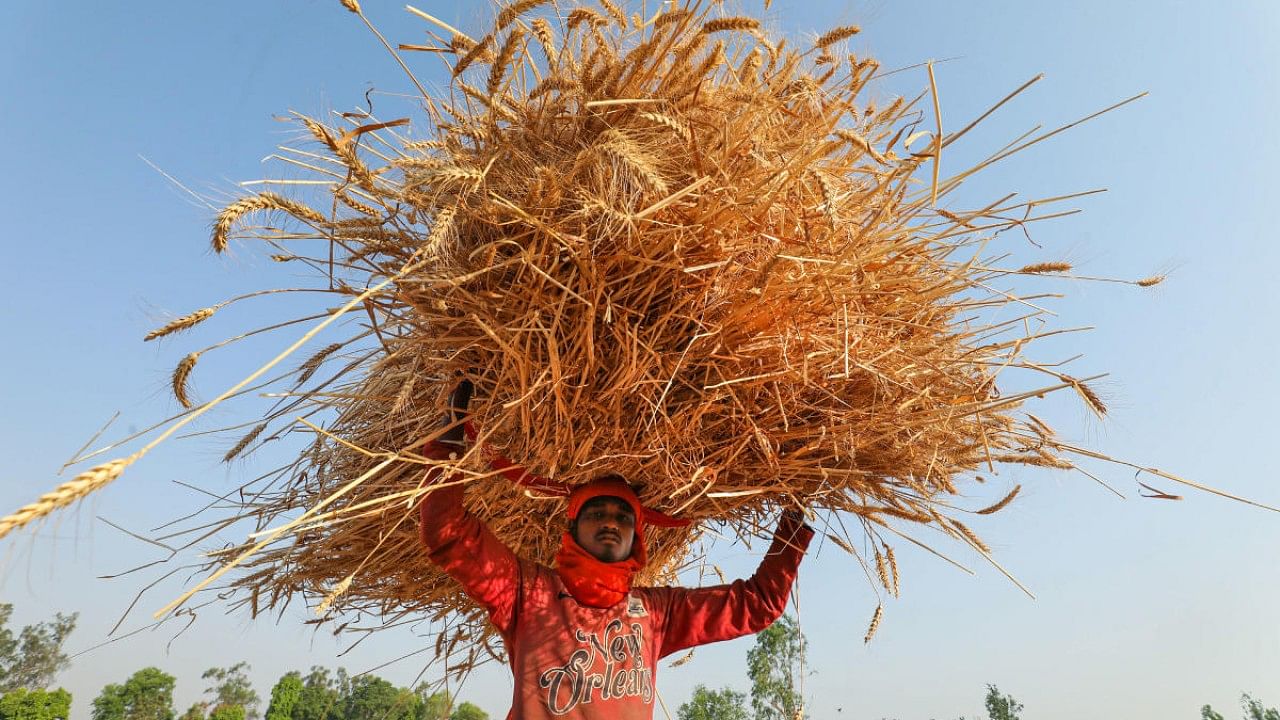
Representative Image.
Credit: PTI File Photo
The environmentally subsidised cost of a product does not reflect the value of natural resources consumed (such as groundwater) or the cost of treating pollution and waste generated during production. The absence of environmental standards or non-compliance, coupled with the goal of higher exports, encourages such production in developing countries.
Ignoring environmental costs makes a product cheaper, enhancing its competitiveness for exports. Low prices boost demand for such products and fuel consumption, leading to increased use of natural resources and pollution accumulation in production locales in developing countries. Producer societies are not compensated for the cost of suffering and lost opportunities due to poor ambient environmental quality.
Earth Overshoot Day (EOD) fell on August 2 this year. EOD marks the date when human consumption exceeds the plane’t total expected annual ecosystem productivity, and whereafter, additional withdrawals deplete the natural capital resource base. This implied a lower level of natural capital to support the economy in the next year. Such erosion of global natural capital since 1970 means 1.7 Earths are needed to meet humanity’s demands today.
Consuming at this rate is unsustainable and fuels environmental crises like global warming and high levels of ambient pollution. Consumption levels in the West are several times those of the rest of the world. The higher per capita earnings induce thoughtless consumption of mass-manufactured goods through imports. Despite higher consumption, the ecological footprint in developed countries remains low, and the environment is almost pollution-free.
Feeding the West through unfettered exports from the rest is environmentally unsustainable. And, in the long run, both the importer and the exporter will lose the war against nature.
The first signs of this lost war are seen in the global loss of 2 million lives and $4.1 trillion to extreme weather events over the past 50 years. Such loss of life is not limited to the rest of the world.
The producer societies meet the costs of depleted and degraded environmental resources and deal with waste and pollution primarily through public investment and not-for-profit mission sources. Such investments are at the expense of other developmental needs of the producer societies, as budgetary resources are diverted to address the adverse impacts of environmentally subsidised production. To reverse this process, it is necessary to appropriately account for the environmental costs of production along with the costs of land, labour, energy, material inputs, and capital.
Unfortunately, developing countries often neglect the environmental costs of production. Such costs seldom appear in the accounts books of companies as economic activity is prioritised over environmental preservation in pursuit of a higher growth rate. Support for manufacturing is preferred for employment generation and economic growth. Furthermore, it is the people at the bottom of the pyramid who feel environmental degradation the most, compared to the better-off. Consequently, the voices for environmental preservation remain unarticulated and subdued.
Low-value manufactured goods and agricultural produce, in effect, result in the export of natural resources embedded in the products, such as water and soil nutrients. The depleted resources demand investment for replenishment. For example, soil nutrients are replenished by adding bio or chemical fertilisers.
Preserving the environment is crucial for economic development and addressing poverty and hunger. Its depletion can preclude the opportunity for the development and well-being of the people in a geography. In the case of small countries or countries with high populations, this can lead to an ecological deficit, as the quantum of the environmental footprint is greater than the annual biocapacity.
For a country like India, which has a large population and low per capita natural resource availability, it is important to consider the environmental costs of production to promote the rational use of ecological resources, secure economic development benefits, and avoid the need for investment in pollution-mediated health issues among citizens.
India is a large country and market. We can limit manufacturing and agricultural production to meet our needs and focus on becoming a knowledge economy rather than a manufacturing one. This will preserve our opportunity for economic growth and ensure a liveable environment for our people.
Meanwhile, the European Union has proposed a Carbon Boundary Adjustment Mechanism (CBAM) that imposes a carbon tax on imported products. The tax so collected becomes available to the EU countries for investment, unduly enriching them again at the cost of the producer developing countries. Such a tax, when collected, should be transferred to the producer countries in developing countries for improving the environmental conditions at production localities, as industrialised countries have inequitably appropriated the available carbon space.
Understanding the status and consumption of environmental resources is necessary to promote rational production and responsible consumption simultaneously. While the producer countries must use natural resources efficiently and build the cost of the environment into the products, consumer countries should pay for such a price. Given the urgency of climate change, failing in this is not an option.
(The writer is director-general, Environmental Management and Policy Research Institute)